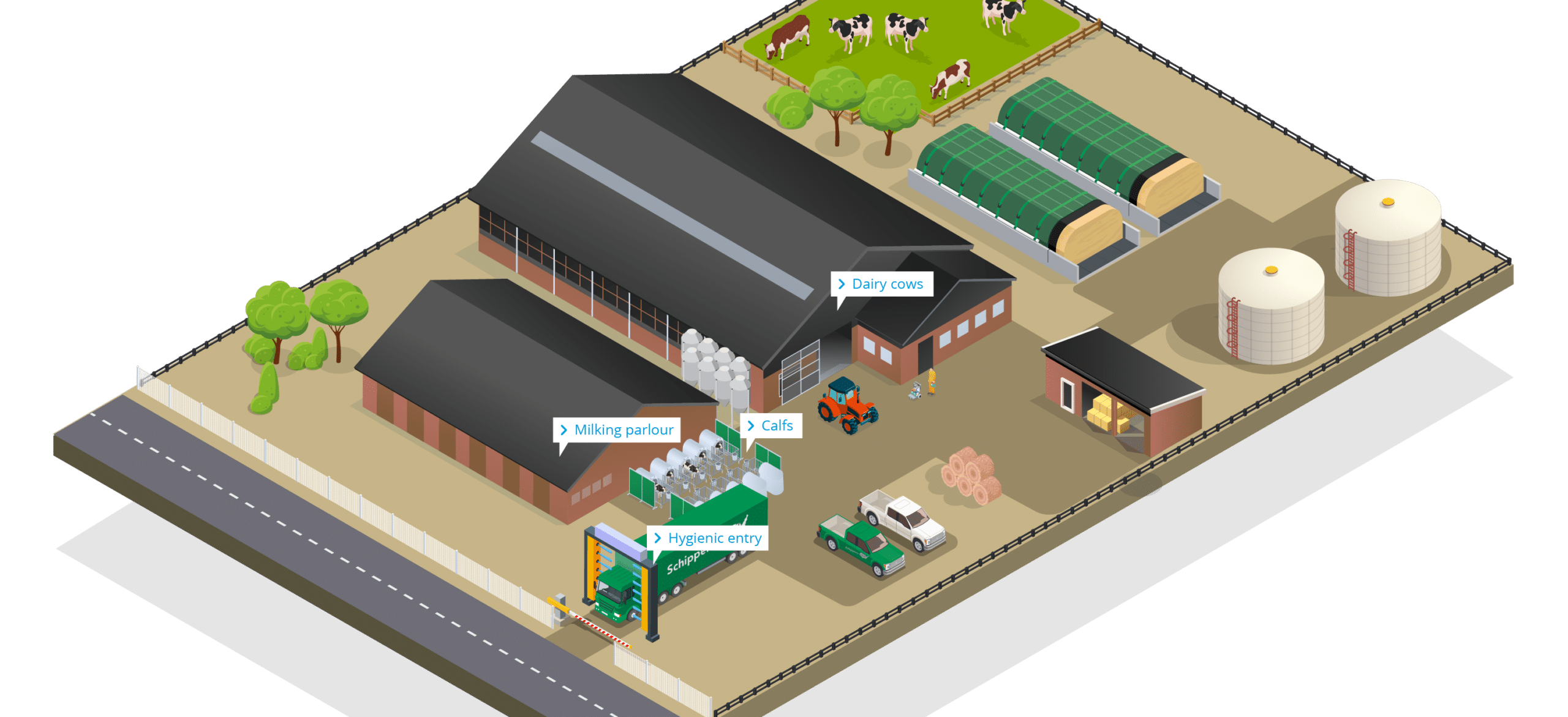
Dairy cows
These are the main shelters for dairy cows. Depending on the farm's setup, cows might be kept in freestall barns (individual stalls with bedding), tie-stall barns (cows are tied in individual stalls), or pasture-based systems. These barns provide protection from harsh weather conditions and also offer a controlled environment for managing the cows' health and comfort.
Milking parlour
This is where the milking of cows takes place. Milking parlour can vary in design, with options like herringbone, parallel, or rotary parlour. Modern milking parlour often use automated milking machines that milk multiple cows simultaneously, ensuring efficiency and reducing labour.
Calves
The calf rearing area. Young calves are typically kept separate from adult cows to ensure proper care and growth. Calf rearing facilities have individual pens or group housing systems and provide the necessary nutrition, warmth, and attention to help calves develop into healthy replacements for the milking herd.
Hygienic entry
Many farms that focus on biosecurity include a hygienic farm entry area, usually a disinfection gate or manual cleaning and disinfection area for trucks, goods or persons that enter the farm.
Biosecurity programsfor dairy farms
Calves
What’s important to maintain biosecurity at the milking parlour?
- Restricted access: The calf-rearing area should be accessible only to essential personnel. Visitors and staff should adhere to strict hygiene protocols, such as wearing clean protective clothing and boots and practising hand sanitization.
- Clean and dry environment: Maintain a clean, dry, and well-ventilated environment. Regularly clean and disinfect calf pens, bedding, feeding equipment, and water troughs to minimize disease risks and promote calf comfort.
- Individual housing: Whenever possible, house calves individually or in small groups to minimize disease transmission. Avoid overcrowding, as it can stress the animals and facilitate the spread of pathogens.
- Bedding management: Keep bedding clean and dry to minimize the risk of bacterial and fungal growth. Replace bedding regularly to prevent contamination.
- Record keeping: Maintain detailed records of calf health, treatments, and biosecurity practices. These records can be valuable for tracking disease trends and improving protocols.
Common challenges
- Diarrhea: Diarrhea is a common health challenge in young calves and can be caused by various factors, including bacterial, viral, or parasitic infections.
- Dehydration: This can occur due to diarrhoea, poor water quality, or inadequate water availability.
- Naval infections: Newborn calves are particularly susceptible to naval infections, which can lead to septicemia. Proper navel care, such as disinfectants and ensuring clean birthing environments, can help prevent these infections.
- Respiratory issues: Respiratory issues, such as pneumonia, are often related to factors like poor ventilation, overcrowding, and exposure to drafts. Proper housing design, good ventilation, and hygiene practices are crucial to minimizing infections.
HyCare Biosecurity program for calves
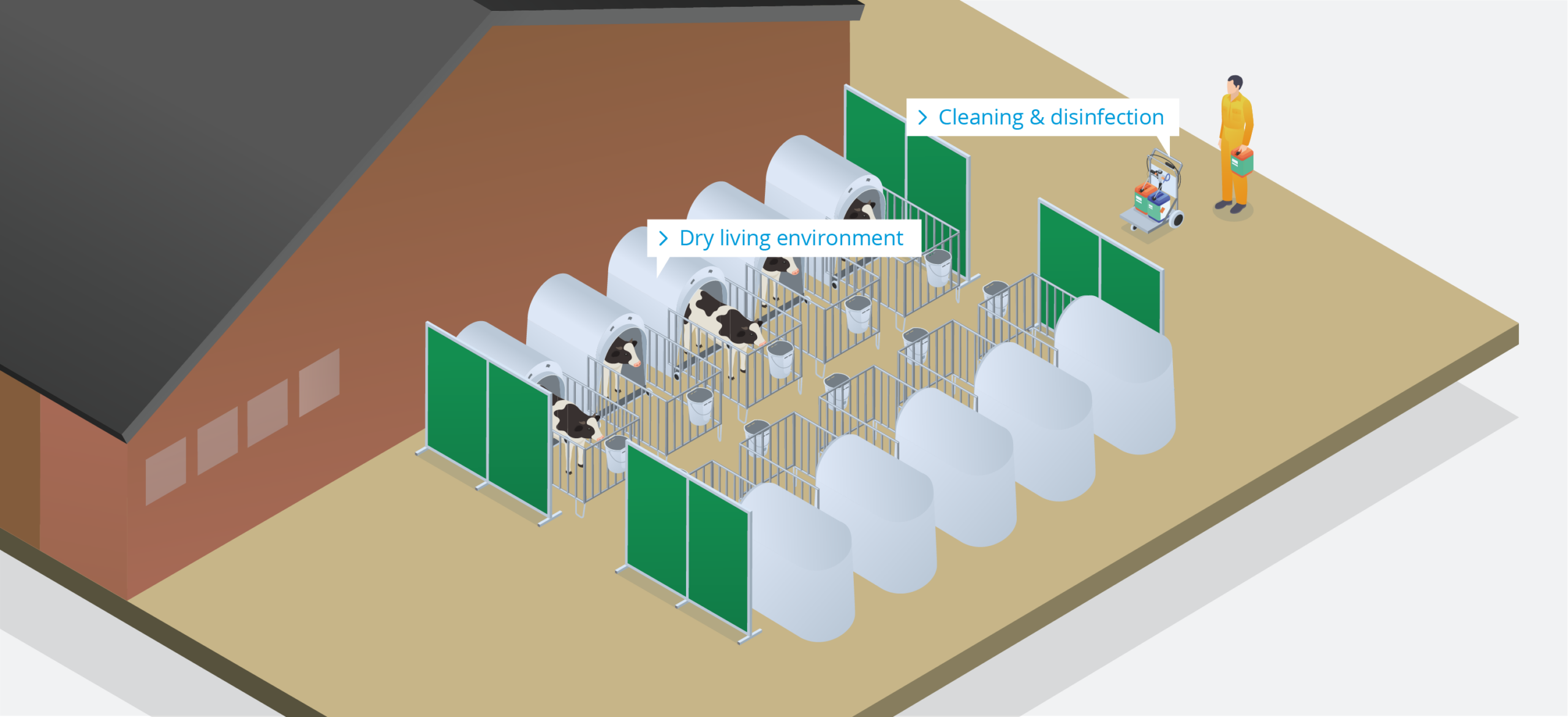
Cleaning and disinfection
Cleaning and disinfecting calf huts is critical to prevent cross-contamination. It’s important to follow proper cleaning and disinfection protocols that are appropriate for calf rearing areas. Use appropriate cleaning agents and disinfectants, give the cleaning agent sufficient contact time before rinsing, and follow a consistent C&D schedule to ensure a healthy and safe environment for young calves.
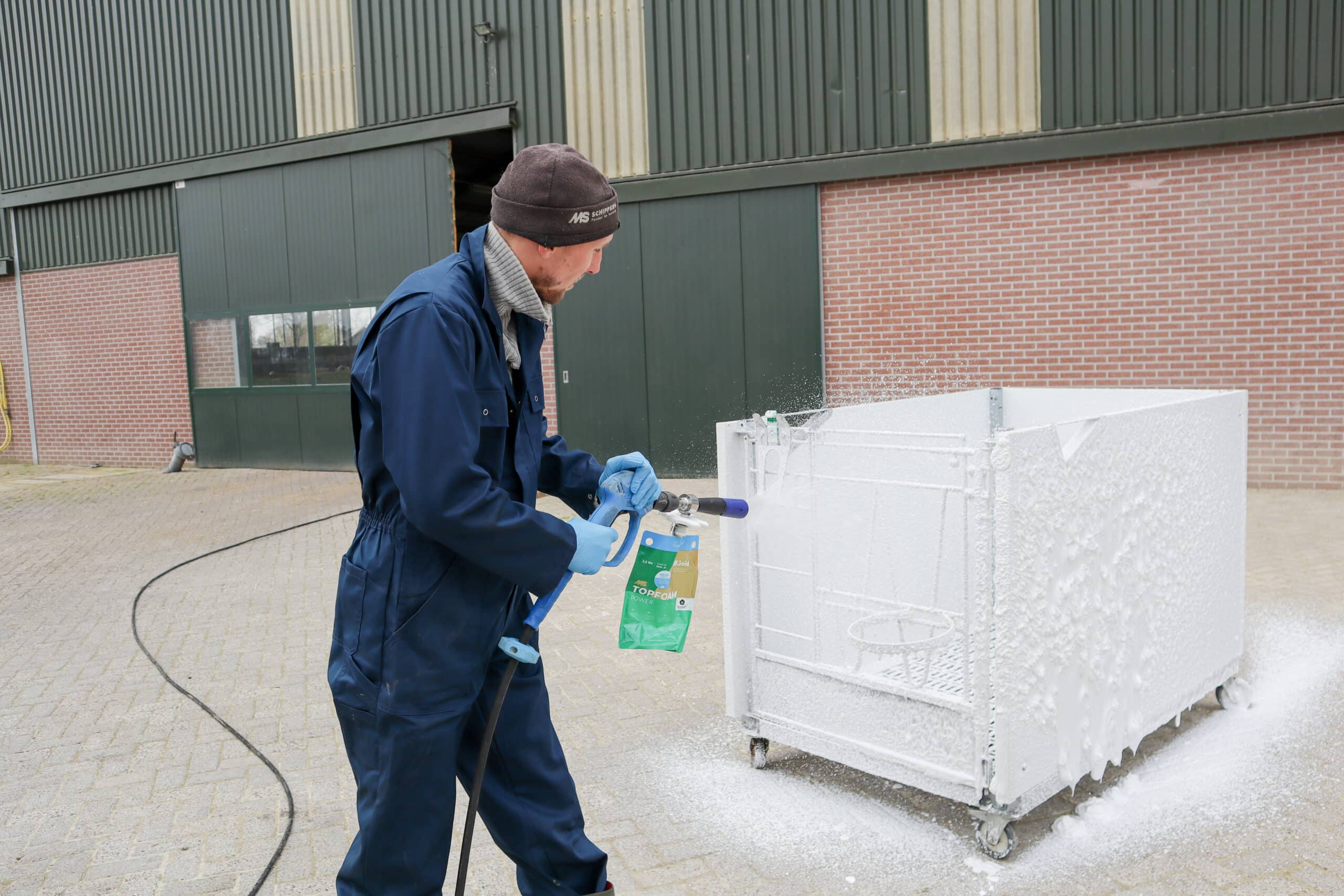
Dry living environment
Calves need a clean, dry, and well-ventilated environment. By controlling moisture in calf huts, you create a healthier environment that promotes calf growth, reduces disease risks, and enhances their overall quality of life. The dry living program is suitable for calf huts to create a dry and comfortable bedding.
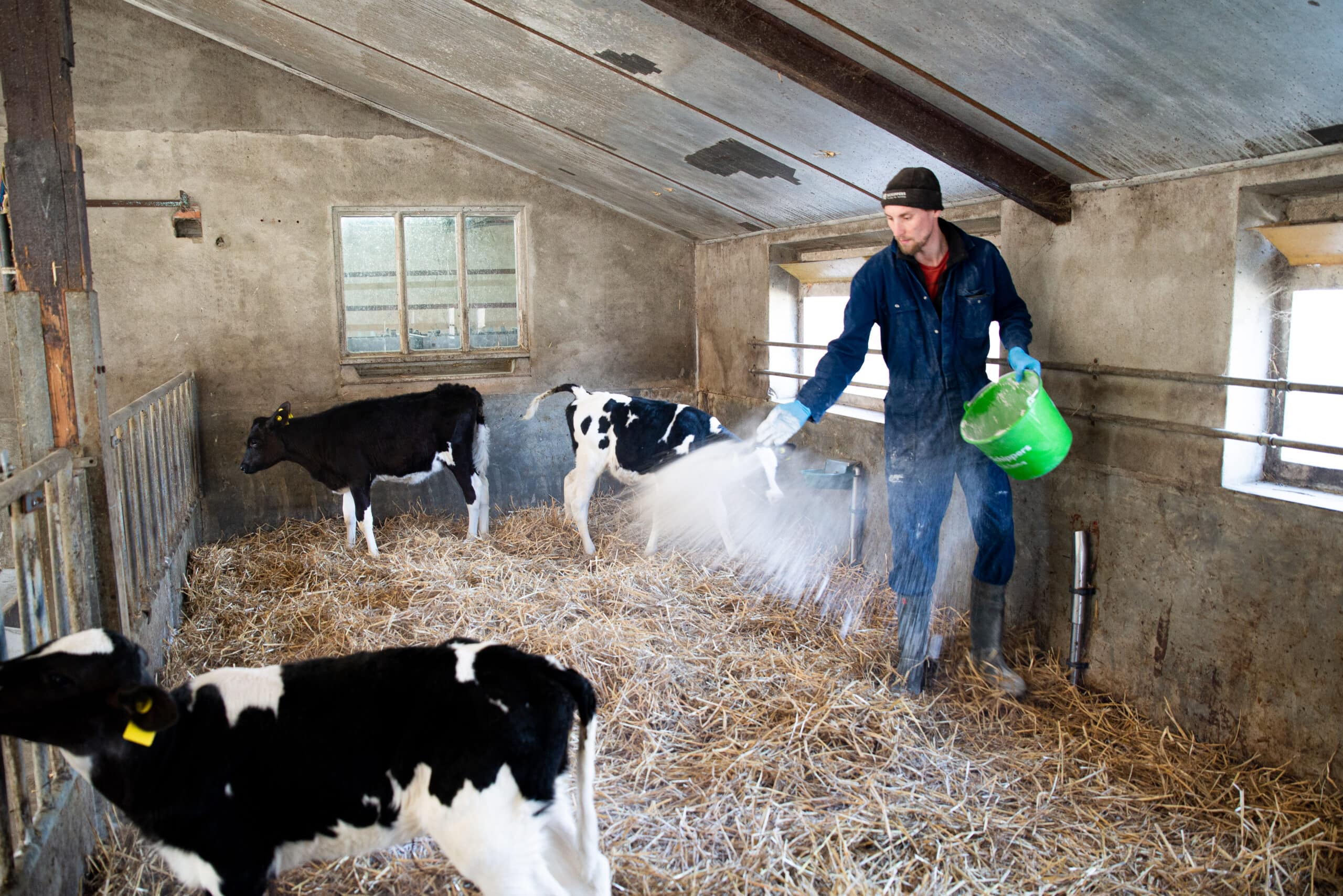
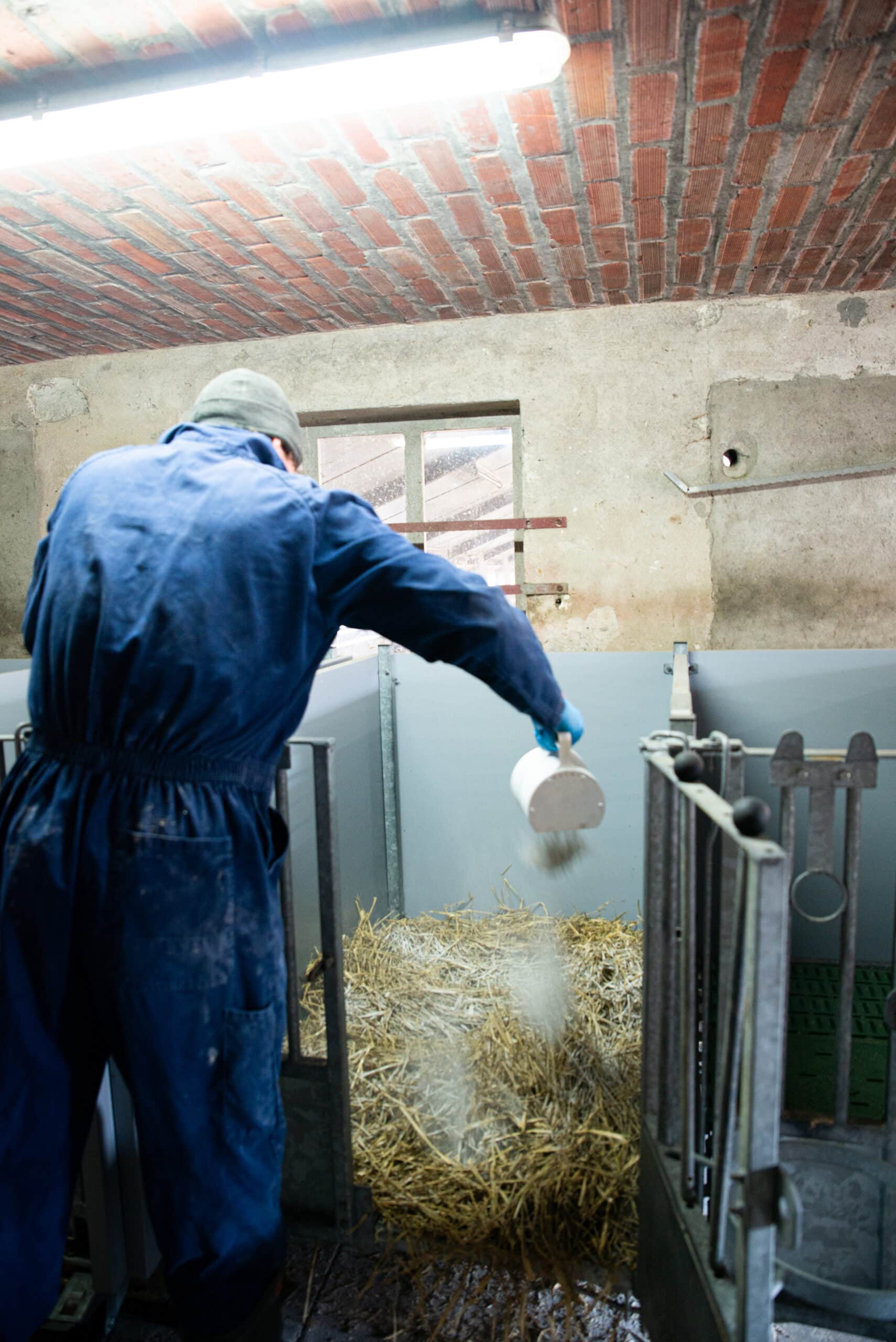
Cleaning and disinfecting calf huts is critical to prevent cross-contamination. It’s important to follow proper cleaning and disinfection protocols that are appropriate for calf rearing areas. Use appropriate cleaning agents and disinfectants, give the cleaning agent sufficient contact time before rinsing, and follow a consistent C&D schedule to ensure a healthy and safe environment for young calves.

Calves need a clean, dry, and well-ventilated environment. By controlling moisture in calf huts, you create a healthier environment that promotes calf growth, reduces disease risks, and enhances their overall quality of life. The dry living program is suitable for calf huts to create a dry and comfortable bedding.



Contact us
Cuong Nguyen
Cuong Nguyen is our Technical Sales Manager and based in Ho Chi Minh City.
